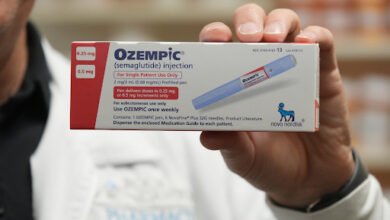Dermatology Tips for Women of Color

We should all love the skin we’re in. While many women have the same goals regarding their skincare — from finding the right moisturizer to managing common skin conditions — women of color can have distinct concerns that aren’t always identified or treated correctly by healthcare providers.
We asked Lakshi Aldredge, MSN, ANP-BC, FAANP, a dermatology nurse practitioner for the VA Portland Health Care System and member of the HealthyWomen Women’s Health Advisory Council, to share some of her top dermatology tips for women of color to care for their bodies from head to toe.
1. Make sure to moisturize
While anyone can experience dry skin, a lack of moisture can be more noticeable on darker skin. Some studies suggest darker skin can also be more prone to dryness because it loses moisture faster than lighter skin. “I tell all patients it’s good to moisturize their skin, but in darker-skinned individuals, it makes such a difference in their skin’s appearance,” Aldredge said. “Also, the drier the skin, the itchier it gets.” Fragrance-free creams and ointments, or even petroleum jelly (except on the face) can help avoid dryness and related skin conditions.
2. Atopic dermatitis and psoriasis look different on skin of color
In lighter skin tones, inflammatory skin conditions such as psoriasis and atopic dermatitis look like red or pink patches, also called plaques. In darker skin tones, those patches may look brown, gray, dark gray, purple or even black. These patches also can look like older skin lesions, which may mean the condition is healing, but the disease is still active.
In people with darker skin, chronic, inflammatory skin conditions may also be misdiagnosed as scars, dry skin or even fungal infections. If you think you may have a skin condition, consider keeping a photo journal of the patches and lesions so your healthcare provider (HCP) can see how your skin is changing.
It’s also important to keep track of the timing of your skin issues. For example, did it occur suddenly or did it happen over months and years? It’s also a good idea to ask if other family members have similar skin conditions and, if so, what treatments worked for them.
3. Treat inflammatory skin conditions like atopic dermatitis and psoriasis as soon as possible
The sooner you get diagnosed, the easier it is to treat inflammatory skin conditions. At-home treatments include taking lukewarm baths using mild soaps and then immediately moisturizing with plain petroleum jelly or other non-perfumed moisturizers. For more severe cases, people can look into more advanced non-steroidal treatments from a dermatologist.
4. Release the tension
Cornrows, braids, beads and other cultural hair care practices among people of African descent should be celebrated, but pulling hair too tightly can lead to hair loss. Traction alopecia, for example, is a type of hair loss often seen in Black women. If you choose to wear braids or similar styles, try to minimize the tension and the tightness, Aldredge said. Other practices, such as bleaching and chemical straightening, can lead to hair damage, hair thinning and even contact dermatitis in the scalp as a result of reactions to the chemicals.
5. Watch for skin changes
If you see new markings on your skin or existing ones start to change size, shape or color, contact your HCP to make sure they’re not an early sign of something more serious. “If you do have a new rash, think about when it started or what you were doing that may have been associated with it,” Aldredge said. “Were you traveling? Did you start any new medications? Any new pets? Bug bites? Is there anyone else in the household or close contacts who have a similar rash or lesion? Getting a good history of the skin issue will be very helpful for your dermatology provider or your primary care provider to help narrow down a diagnosis.”
6. Understand that skin conditions can present in different locations in darker-skinned individuals
Skin cancer is a significant example of how conditions can appear different by race — melanoma rates are lower in people with darker skin because of their higher melanin content, which protects against sun damage. When it does occur, it tends to appear on the palms, soles and nails versus the scalp, face, back or trunk in fairer-skinned people. “Bob Marley died of melanoma and it started in his toenail,” Aldredge said. “That’s the classic example.”
This resource was created with support from Eli Lilly.
From Your Site Articles
Related Articles Around the Web
Source link
#Dermatology #Tips #Women #Color



